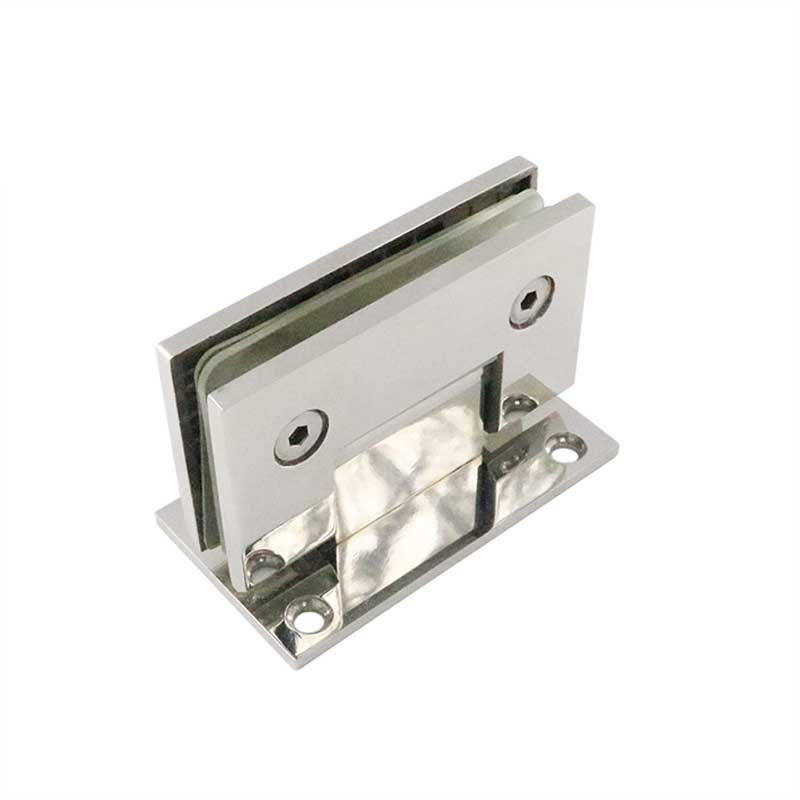Enhancing Accessibility- Ergonomic Considerations in Glass Door Handle Design
In today’s inclusive society, accessibility is paramount, extending beyond physical barriers to encompass cognitive, sensory, and age-related impairments. Glass door handles, often used in commercial and public spaces, play a crucial role in facilitating access for all individuals. This article explores the key ergonomic considerations involved in glass door handle design to optimize accessibility and enhance user experience.
Handle Shape and Size
The shape and size of a door handle significantly influence its usability. For individuals with limited hand mobility or dexterity, large, easy-to-grip handles are essential. Rounded or curved shapes provide a comfortable and secure hold, reducing the force required to open the door.
Handle Placement
The positioning of the door handle is equally important. It should be located at an appropriate height for users of different heights and abilities. Typically, a height of approximately 42 inches from the floor is recommended, ensuring accessibility for most individuals, including those in wheelchairs.
Handle Resistance
The resistance of a door handle refers to the force required to open or close the door. Handles with excessive resistance can be difficult or impossible for individuals with weak grip strength to operate. Conversely, handles with insufficient resistance may allow the door to swing open unintentionally, posing safety hazards. Designers must strike a balance between ensuring secure closure and ease of operation.
Handle Color and Texture
Color and texture play a subtle but significant role in enhancing accessibility. Handles with high-contrast colors improve visibility for individuals with visual impairments. Textured surfaces provide a secure grip, even for users with sensory sensitivities or wet hands.
Push/Pull Indication
Clearly indicating the direction of handle operation is crucial. This can be achieved through visual cues, such as arrows or labels, or tactile cues, such as raised ridges or indentations. These indications assist users in understanding how to operate the handle correctly and prevent confusion or frustration.
Universal Design Principles
Ergonomic considerations in glass door handle design should adhere to universal design principles. This approach aims to create products and environments that are accessible to the widest possible range of users, regardless of their abilities or disabilities. By incorporating these principles, designers can ensure that glass door handles meet the needs of all individuals, fostering inclusivity and empowering everyone to navigate public spaces with ease.
Conclusion
Enhancing accessibility in glass door handle design is essential for creating inclusive and welcoming environments. By carefully considering ergonomic factors, such as handle shape, placement, resistance, color, and texture, designers can optimize the usability and functionality of door handles for individuals of all abilities. Adherence to universal design principles ensures that these handles cater to the diverse needs of users, promoting safety, accessibility, and ease of use for all.
-
Why Choose Custom Glass Clamps for Shower Doors? Find the Perfect Fit for Your Bathroom
24-12-2025 -
How Do Glass Shower Door Clamp Hinges Improve the Functionality and Aesthetics of Your Bathroom?
23-12-2025 -
What Is a Shower Door Wall Bracket and Why Is It Essential for a Secure Bathroom Installation?
16-12-2025 -
What is the maximum weight that frameless shower door clips can support?
11-12-2025 -
Shower Glass Clips Hardware: The Ultimate Guide to Choosing, Installing, and Maintaining
05-12-2025
-
Are Glass Door Locks Really Secure? Your Ultimate Guide to Choosing the Right One
25-12-2025 -
What Are Frameless Shower Door Clamps and How Do They Impact Your Bathroom Design?
23-12-2025 -
What are frameless shower clamps and why are they essential for modern bathrooms?
19-12-2025 -
What Makes the Ideal Wall Bracket for Your Glass Shower Screen?
18-12-2025 -
Is a Clip Lock for Door the Smartest Way to Improve Everyday Home Security?
17-12-2025











